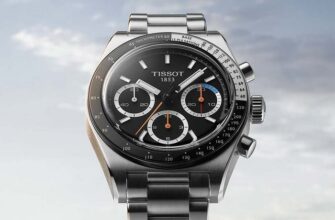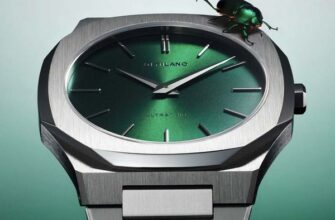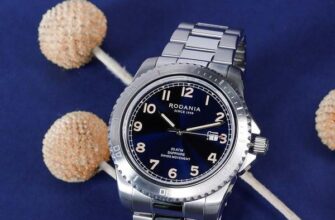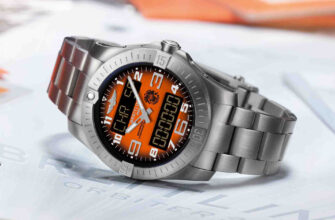A pleasant, useful, and sometimes just an obligatory feature of a wristwatch is the illumination of the dial, so that you can read the readings in insufficient light or even completely in the dark.
The most common way of backlighting is the use of photoluminescent substances, which are applied to arrows, marks, numbers. Once they used radioactive compounds: this was, in particular, the Radiomir powder, patented by the Italian company Panerai more than a hundred years ago. At that time, they did not know about the danger of radiation, but after the Second World War they found out - and already developed safe coatings.
By now, there are quite a few of them, the most famous is SuperLumiNova, patented by the Japanese company Nemoto in 1993. It is used by most Swiss watchmakers. And the Japanese themselves use other options: for example, Seiko has Lumibrite, Casio has Neobrite.
The American company Invicta has its own modification of the phosphor, it is called Tritnite. But the principle is the same: the phosphor accumulates light energy received from outside (from the Sun or an artificial source) - this "charging" takes some time - and then returns this energy also in light form and again for some time.
Nowadays, strontium aluminates are most often used as a luminescent base, with various additives.
There are also alternative technologies. For example, tritium, scientifically called GTLS (Gaseous Tritium Light Source), also known as trigalight. It was invented by Swiss chemists Walter Merz and Albert Benteli in 1918, the legal holder of the technology is mb-microtec, which also owns the Swiss watch brand Traser. The essence of trigalight is the use of micro tubes embedded in arrows and marks and filled with tritium. In the course of its radioactive decay (the half-life of tritium is more than 12 years), its molecules bombard the phosphor layer applied to the inner surface of the tube, causing a glow.
In other words, the radioactivity of tritium replaces sunlight, so there is no dependence on external sources and no “charging” is required. In addition to Traser, this technology is also used by some watch brands - for example, Luminox and the very elite Ball. Despite the frightening word "radioactivity", there is nothing to fear: the radiation of decaying tritium is effective only at a distance of 1-2 mm.
And, finally, there is an electroluminescent backlight, which is also LED. The energy source is a battery, and if it is in working order, then the backlight works flawlessly and regardless of anything. It is necessary to press the corresponding button on the case - and the dial is highlighted immediately and brightly. And for very advanced models, you don't even need to press anything - you just need to turn your hand, the “lights” on the dial will light up automatically.
For a clear illustration of all this, we decided to take three models of watches with different types of backlighting and compare them.
Invicta speedway
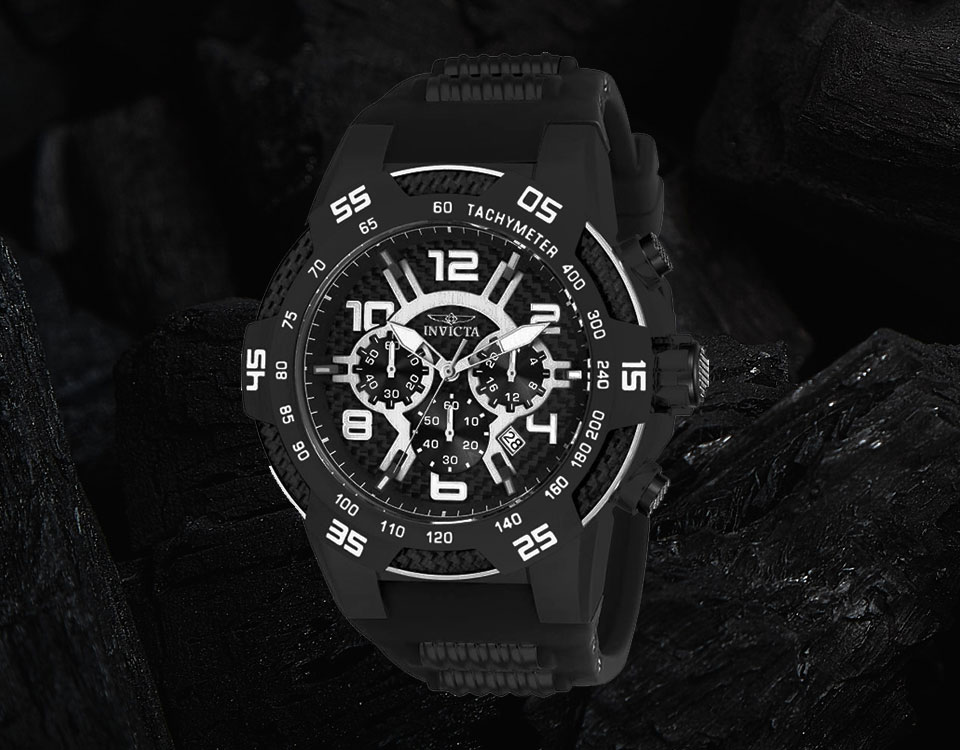
As already mentioned, the American watch company Invicta uses a proprietary phosphor patented under the name Tritnite. It belongs to the category of classic photoluminescent substances, but Invicta specialists managed to achieve a high sensitivity of the composition to external light, so that "charging" occurs very quickly and even in cloudy weather.
For acceptable use of the watch in the dark, it is enough to "charge" it with light for literally 10-15 minutes. The details of the technology were not disclosed, but there is reason to believe that an additive in the form of tritium atoms is included in the coating composition. The rest of the Tritnite properties are about the same as the reference SuperLumiNova. Good illumination is provided within 6-10 hours, the composition retains its effectiveness for 20-25 years.
As for the watch itself, it is a brutal (51 mm in diameter) quartz chronograph made in the All Black design - steel, black IP-coating, carbon inserts, black carbon dial, black silicone strap, tachymeter scale.
Casio G-SHOCK G-Steel
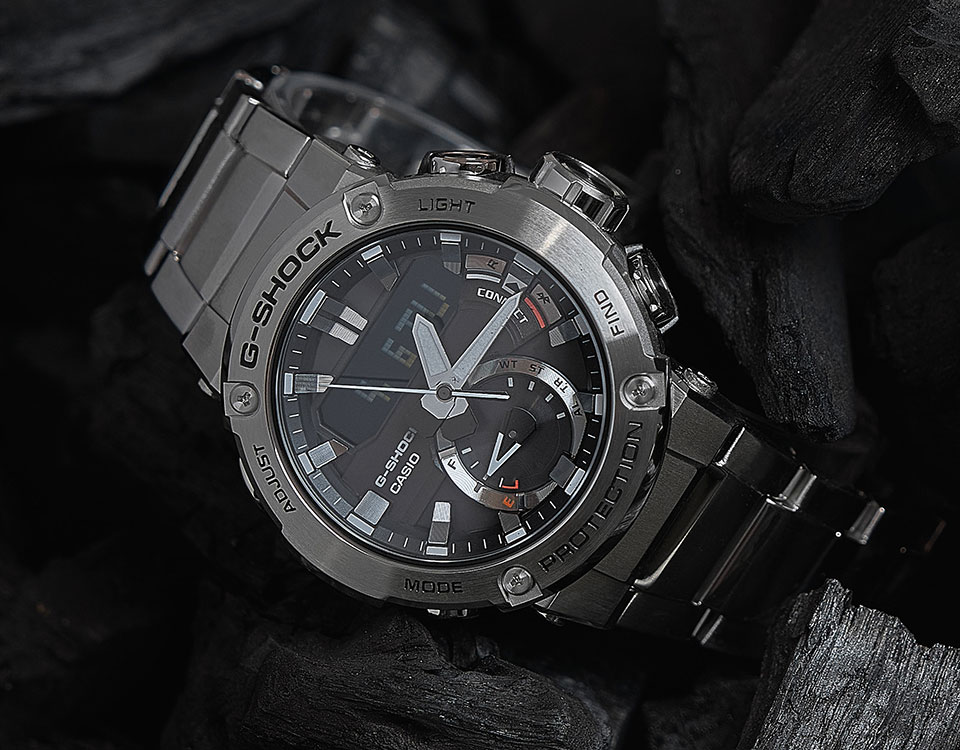
The Japanese work with their own phosphors, Casio has Neobrite. It is also based on strontium aluminate, "charging" is quite fast (after half an hour it already works decently), the glow is very dense, the good glow time and overall service life are typical for such compositions and, in principle, do not differ from SuperLumiNova and similar ones. However, this watch, like many other samples from Casio, is also equipped with an LED that works automatically when you turn your wrist.
As already noted, this backlight does not depend on any external sources, but only depends on the state of the battery ... but even here the Japanese are ahead of the rest, because this model runs on a solar battery - the proprietary Tough Solar technology!
And in all other respects we are dealing with a very high-tech model: synchronization with a smartphone via Bluetooth, automatic adjustment of the exact time, world time, automatic calendar, chronograph, timer, alarm clocks. Here, of course, the basic qualities of G-SHOCK are incomparable shock and vibration resistance, 200-meter water resistance, magnetic resistance. The diameter of the case is made of steel and carbon - 49,2 mm, the case is made according to the concept of Carbon Core Guard.
Traser P96 OdP Evolution Gray
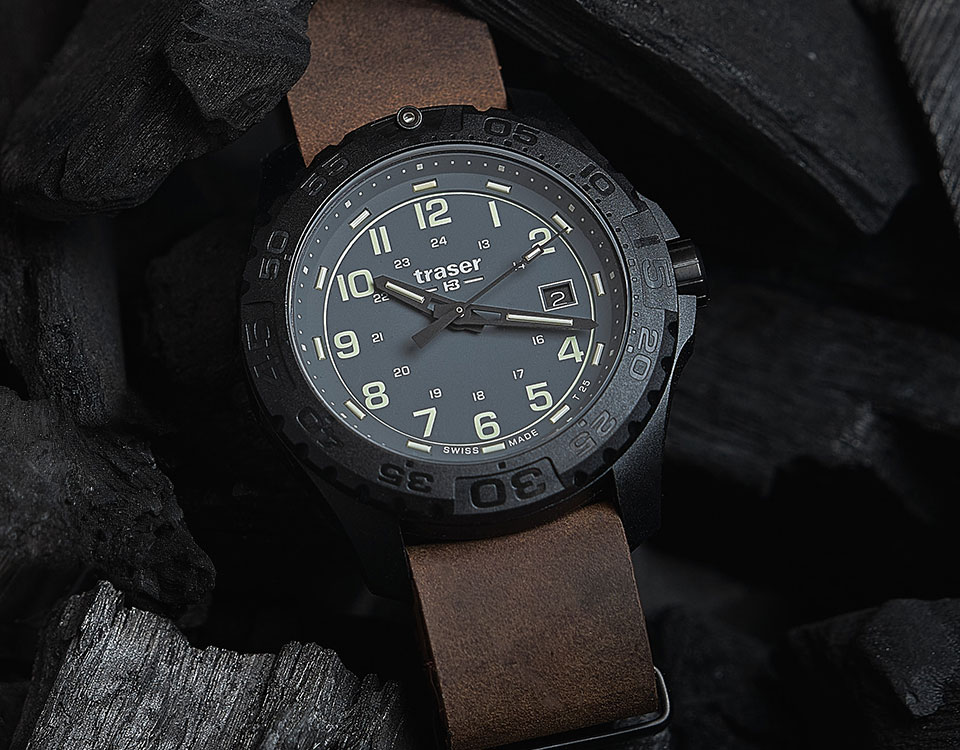
As we already mentioned, the Swiss company Traser uses trigalight tritium backlight technology. The hydrogen isotope tritium in a sealed micro tube made of borosilicate glass undergoes β-decay and bombards a thin layer of phosphor deposited on the tube walls with electrons, causing a glow. Thus, intra-atomic energy is used, no "recharging" is required, the glow is continuous. This is a plus and a minus of the technology is that the half-life of tritium is 12,3 years, after which the tubes fade noticeably.
However, Traser often combines both types of illumination on the same dial - tritium and photoluminescent (SuperLumiNova), thus compensating for the shortcomings of each and using their advantages. By the way, the company reflects the presence of tritium on the dials with the markings T (tritium) and / or H3 (the official designation of this isotope). On the dial of the model in question, there are both: T - next to the Swiss made at the bottom, H3 - at the 12 o'clock position.
Three date switches in a 44mm shockproof case made of reinforced composite, equipped with a unidirectional bezel, protected by the crown, sapphire crystal and has a high water- (200 m) and magnetic protection. The watch meets the requirements of the international diving standard ISO 6425, and they work on the Swiss quartz movement Ronda 515.
Note the high clarity of the indication in any conditions, a pleasant green backlight tint (except for the 12 o'clock position, which, according to the same standard, is made in a different color - in this case orange), an additional hour scale from 12 to 24, a leather strap, individual number on the back cover.

